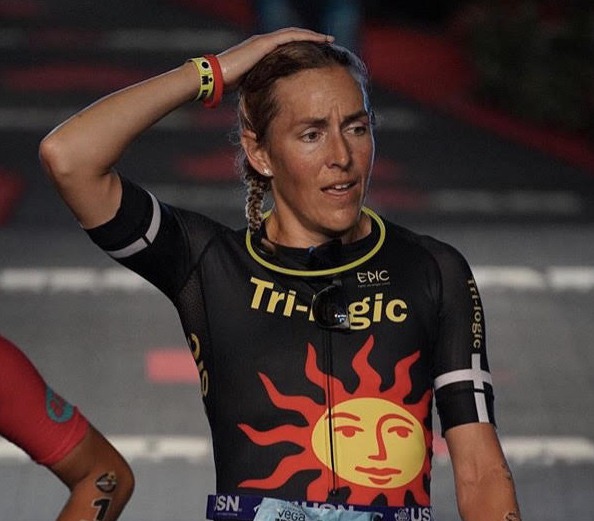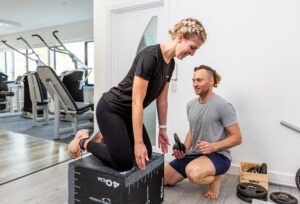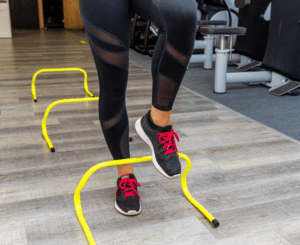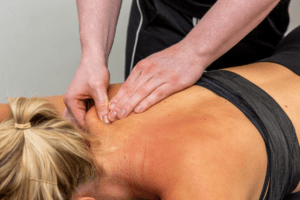We would like to introduce you to Anna, an amazing physiotherapist who set up our University Club location, mother and elite athlete.
Anna, can you tell us a little about your sporting career to date?
Firstly, I really don’t feel like I can accept the title ‘elite athlete’!! I have definitely had some lucky and surprising results but I don’t consider myself in that category! I took up rowing quite late when I was 25 whilst working as a physio in New Zealand in 2005. I had played lots of ball sports at school and we did bike touring holidays as a family so I was always active but I never did athletics or competitive endurance sport of any kind so I had no idea that that was my strength.
Over the next few years I rowed a top club level and did quite well but it wasn’t until I won my division at the Sculler’s Head of the River race (the boat-race course in the reverse direction) in London in a single scull in 2009 that someone suggested trying out for the GB rowing team. I spent the next two and a half years training full-time with a high performance group at Wallingford Rowing club and it was only really by accident that I set up my private practice in Oxford and left my NHS job to enable me the flexibility to spend more time rowing. For 6 days a week we would spend from 7am – 12pm training, rowing for 90 minutes, then having second breakfast, and then doing either weights or ergos (rowing machine) in the gym. It was a fantastic surreal life where the river felt like my office and work was something that fitted in around it. In the end, it didn’t quite work out for me with GB rowing and although I came 3rd in the GB rowing trials first assessment in October 2011, I didn’t meet the desired height (I’m 5’7 and 3/4’’ – and the ¾ inch is important!) or weight (I was only just too heavy to race lightweight) for a heavyweight and I was also told that I was too old. I had managed to get to the final four in seat racing for the Commonwealth regatta and won representing England in the single scull at the Home International regatta but although I had good speed on the water it was obvious that I wasn’t going to get any further with rowing at that point. It’s fair to say I left the sport fairly disillusioned and burnt out but I did at least manage to win my last race at Henley Women’s Regatta in a single scull which was one of the highlights of my rowing career.
I sold my boat straight after that and never rowed again having already qualified for the GB age-group team in my first ever sprint distance triathlon. I went on to race at the age-group world championships in Auckland in 2012 and London in 2013 (sprint and then Olympic distance) with top-10 finishes at both in my age-group. Then I had a bit of a break, got married, went travelling and had two children. As a goal to get fit again after pregnancy, I entered Ironman Wales in 2018 when my youngest was just over a year old without any expectations, having not trained specifically at all (I only did two long bike rides and 3 swims) but spending a lot of time running around pushing the kids in a double running buggy. So it was a total surprise that I won my age-group and qualified for Kona 2019 – the Ironman World Championship.
Wow, that sounds demanding! How do you juggle the training with work and family life?
To be honest, I don’t think I managed to juggle it very well! Training for Kona I put a lot of pressure on myself. We also relocated from Oxford to Cornwall in April last year and I started a new job in A&E working 3 days a week. On those days, I would get up at 5.30am, cycle 8 miles to Truro to swim for an hour with the swim club, then do a full day’s work and cycle 8 miles home again, and often I’d do an hour on the wattbike in the garage after the kids were in bed. My husband Charlie took on a lot of the parenting responsibilities for a few months to enable me to do this. I tried not to train at weekends as that was our family time but I definitely over-compensated during the week and pushed myself too hard. It wasn’t sustainable at all. I also didn’t have the time to do long rides or runs.
Training and competing at an elite level, can sometimes mean you are bordering between performance and injury, have you had any major injuries to date?
Yes. I think I have had most injuries! In rowing I had several tendon injuries (tenosynovitis in my wrists and achilles, tennis elbow) and a rib injury, but my worst injuries have definitely been from running. In 2012 when I had been combining competitive rowing training with taking up triathlon, I went from zero running to running… quite a lot! Going from a sport where you spend most of your time sitting down, my approach was not very clever at all and I developed a stress fracture in my hip (neck of femur). This was diagnosed just before my final at Henley Women’s regatta and resulted in more than 8 weeks on crutches in the 3 months before the age-group triathlon world championships. Unfortunately, although I thought I had learnt from my mistakes I obviously pushed the boundaries too hard / too quickly again in training for Kona last year and history repeated itself. This time it was a stress fracture in my foot which meant that I was unable to run at all in the 3 months before Kona and the first run I did coming back from this injury was the Ironman marathon itself. I would not recommend this, at all!!
Do you have any advice about how to avoid stress fractures for any athletes reading this?
Yes. Although they might think from hearing my track record that I’m not the best person to be giving them advice! Stress fractures occur when loading exceeds the rate at which bone can recover. Management of overall training load and recovery between sessions is key as well as periodisation with a recovery week built into the training programme every 4-6 weeks. With a history of injury, particularly bone stress injury, I would not recommend running every day but incorporate some cycling, swimming or other forms of cross-training, as well as some strength training. Training factors which increase risk of developing a stress fracture are increases in mileage, increases in running pace / intensity (speed work), changes to a harder running surface (trail to road) and increases in down-hill running. These will increase the overall load and therefore increases need to be made very gradually in order for the body to recover and adapt to the new training load.
Two other major factors are nutrition, and hormones and these two are closely related. Hormones are very rarely talked about by coaches and athletes but the role of energy deficit and hormones should never be overlooked in bone stress injuries. To give a very brief explanation, if an athlete is not consuming enough calories, or not timing calorie intake well to balance their energy expenditure and training, there is a chain of hormonal events which result in a reduction in oestrogen production in females and testosterone in males, and this in turn has can lead to a reduction in bone mineral density (osteopenia or osteoporosis). The barometer for good hormonal health in female athletes is having a regular monthly menstrual cycle and if this becomes irregular or stops, the athlete should seek advice from a sports physician. It is important to note that taking the oral contraceptive pill will mask any signs as it produces an artificial period but does not protect the bones. For men, it is harder to measure as there is not such an obvious sign when the hormones are out of kilter. For anyone wanting to learn more, links to an article and assessment tool are below.
The ironic thing for me is that when I did my MSc at UCL in 2006 – 2007, I researched the phenomenon then known as the Female Athlete Triad, now re-named as Relative Energy Deficiency in Sport (RED-S) – which reflects the fact that men are also affected. Despite my knowledge in this area, I was completely shocked that I would develop these injuries and put them down to poor decisions about my training rather that RED-S. I had a paper published and presented findings of the female athlete triad in lightweight rowers at two conferences. However, I was unable to save myself from these issues and it’s only recently that I’ve admitted even to myself that RED-S has had an impact on me personally. I convinced myself that RED-S didn’t apply to me as I have never had any intentional weight-loss and have always eaten impressively large amounts (my housemate used to call me ‘Greedy Reidy’!). I spent most of my rowing career with the aim of gaining weight to increase my power racing as a heavyweight, and I did heavy weight-lifting 3 times a week. However as I now know, it is quite possible for an athlete to be in energy deficit despite a high calorie intake. Having spent 3 and a half years of the last 5 either pregnant or breast-feeding, whilst continuing to train, my energy demands were huge and combined with lack of recovery and sleep from having small children and increase stress hormones such as cortisol and adrenaline, despite ensuring that I was eating well and frequently, taking calcium and vitamin D, having full fat milk and yoghurts after training, it is not entirely surprising that my bones were affected. This is a huge topic with so much to talk about and probably needs a separate podcast of its own. Two podcasts worth a listen are:
and
And further support can be found here:
http://health4performance.co.
Following the amazing achievement of competing in Kona, where do you see your training going next?
Kona was the most amazing experience. It is an iconic race, one of the toughest one-day races in the World. If I had come to the sport 15 years ago then I would love to give it a shot and train full-time to see what I could achieve. But I’m going to be 40 this year and I have two young children and for me, it’s just not worth the sacrifice and it’s not fair on the family. I’m just enjoying going out running with the dogs and doing local running races for fun. I still like to keep fit but love not having any pressure to train if I don’t feel like it!



